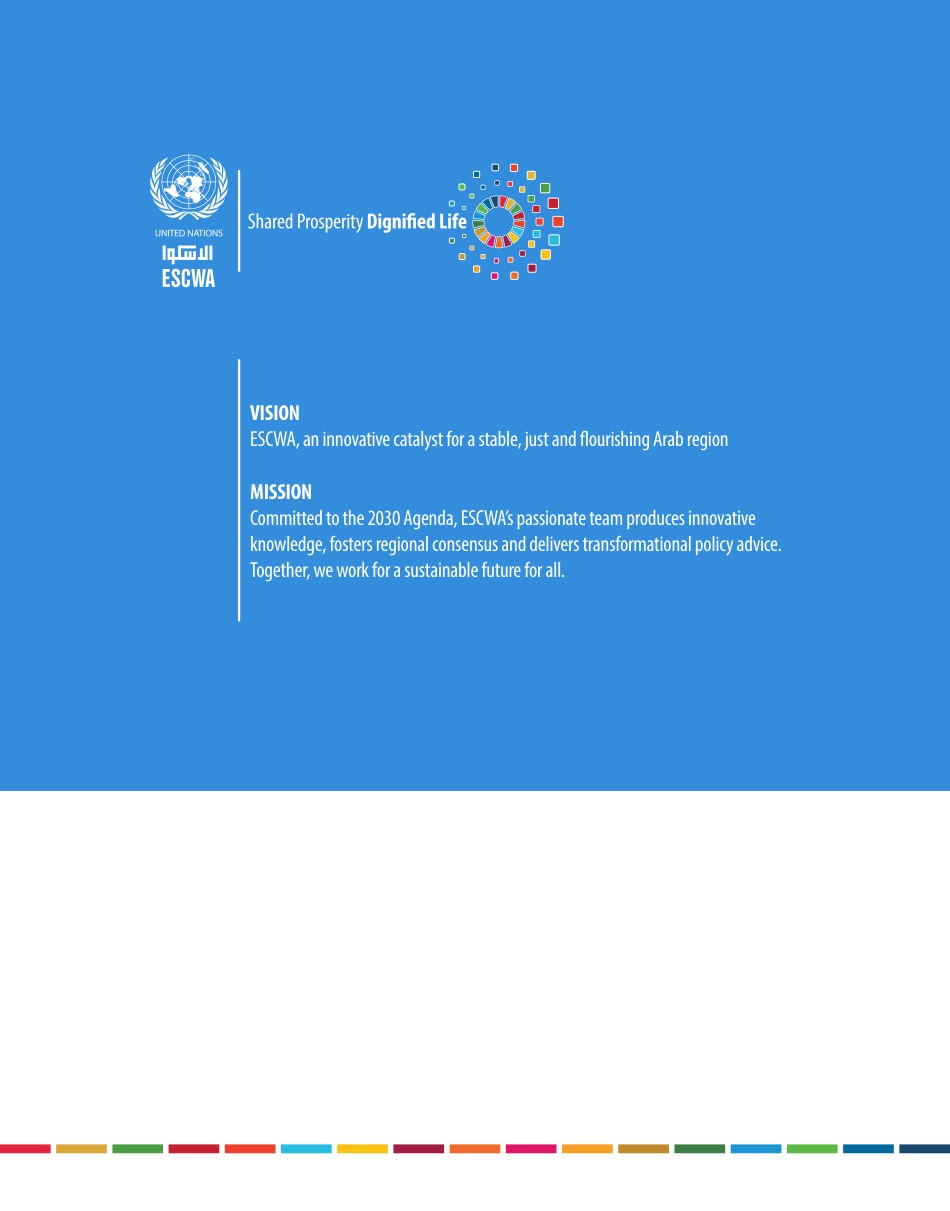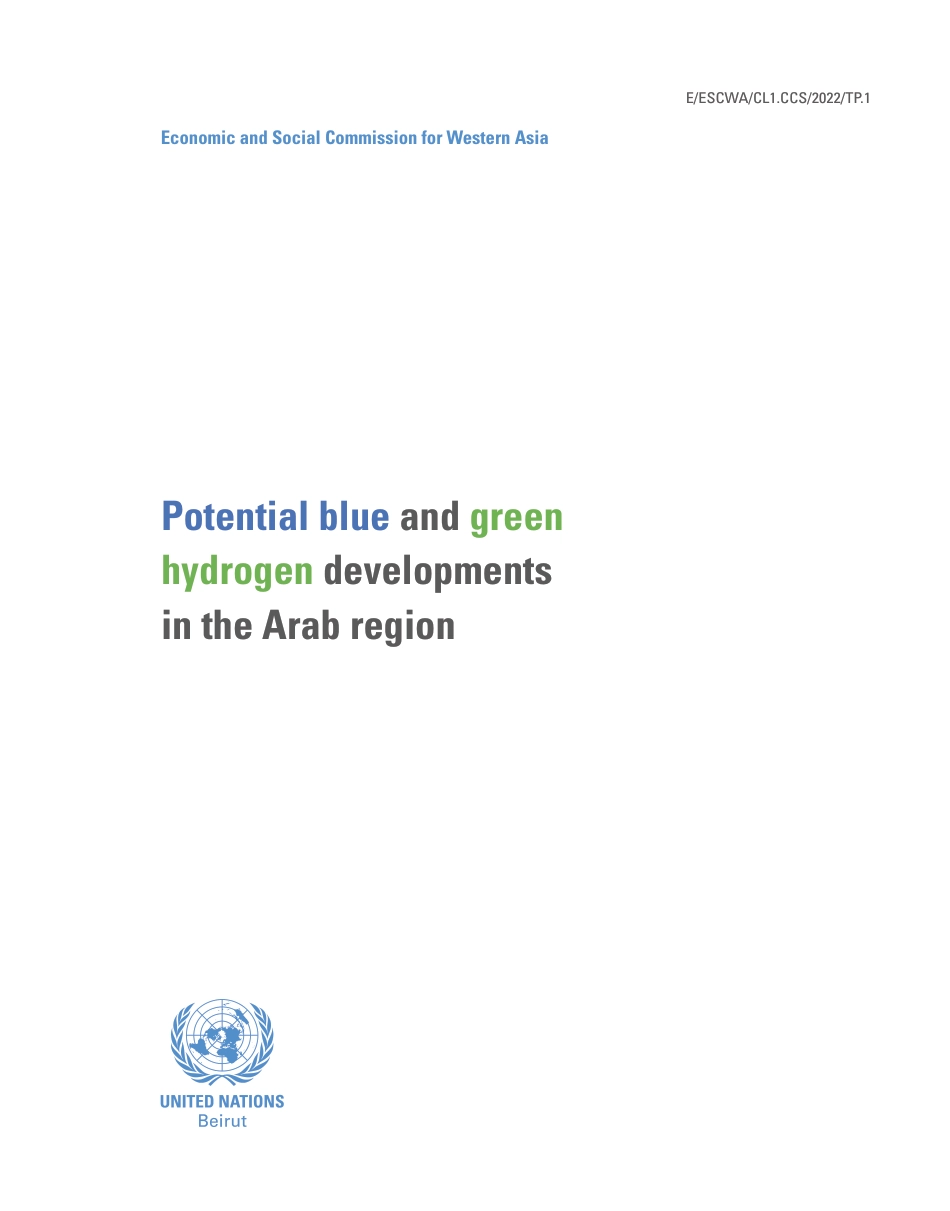Potential blue and green hydrogen developments in the Arab regionVISIONESCWA, an innovative catalyst for a stable, just and flourishing Arab regionMISSIONCommitted to the 2030 Agenda, ESCWA’s passionate team produces innovative knowledge, fosters regional consensus and delivers transformational policy advice.Together, we work for a sustainable future for all.Potential blue and green hydrogen developments in the Arab regionE/ESCWA/CL1.CCS/2022/TP.1Economic and Social Commission for Western Asia© 2022 United Nations All rights reserved worldwidePhotocopies and reproductions of excerpts are allowed with proper credits.All queries on rights and licenses, including subsidiary rights, should be addressed to the United Nations Economic and Social Commission for Western Asia (ESCWA), email: publications-escwa@un.org. The findings, interpretations and conclusions expressed in this publication are those of the authors and do not necessarily reflect the views of the United Nations or its officials or Member States.The designations employed and the presentation of material in this publication do not imply the expression of any opinion whatsoever on the part of the United Nations concerning the legal status of any country, territory, city or area or of its authorities, or concerning the delimitation of its frontiers or boundaries. Links contained in this publication are provided for the convenience of the reader and are correct at the time of issue. The United Nations takes no responsibility for the continued accuracy of that information or for the content of any external website.References have, wherever possible, been verified.Mention of commercial names and products does not imply the endorsement of the United Nations.References t...



